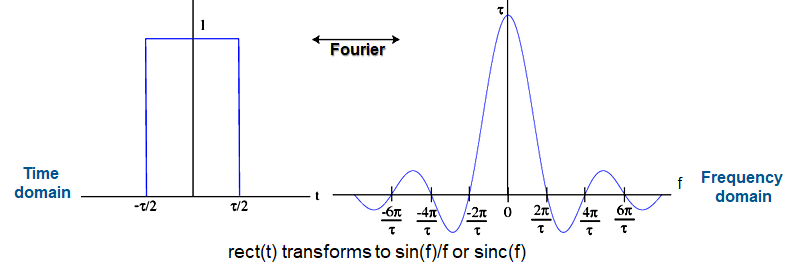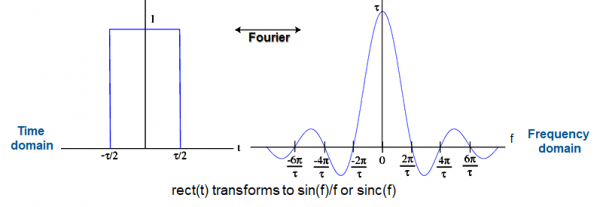
Is OFDM Wi-Fi 6’s Superpower?
By Steve Harris On 06/11/2020
Wi-Fi 6 offers key features such as capacity, throughput (bits per second) / higher data rates (packets per second), improved coverage, dense environment performance, and lower battery consumption/power efficiency. One of the key elements that is driving capacity, throughput, and performance in Wi-Fi 6 is orthogonal frequency division multiple access (OFDMA).
OFDMA builds on OFDM, or orthogonal frequency division multiplexing. A key component of OFDM is its orthogonality and its non-overlapping subcarriers. Orthogonality is independence or non-interference between members of a group, in our case a group of RF subcarriers. The orthogonality in OFDM is imposed in the frequency domain by means of the fast Fourier transform (FFT). FFT is a fast way to compute the discrete Fourier transform (DFT), allowing any waveform to be expressed in terms of sine waves. FFT for Wi-Fi 6 supports a maximum size of 2048, providing better frequency resolution of the RF signal being represented.
Data symbols are a variable amplitude rectangular pulse, as a function of time or represented in the time domain. Taking an FFT of the rectangular pulse produces a SIN(f)/f or SINC(f), a function in the frequency domain. SINC-functions exhibit a special property, they have a regular spacing of zero crossings or nulls in the frequency domain. By the proper choice of FFT-parameters (e.g., size) the subcarriers may be positioned at frequencies such that the peak of one subcarrier is aligned with the nulls of all other subcarriers. Each of these SINC curves represents a subcarrier!

Figure: Image Courtesy of SCTE, DOCSIS 3.1
Also, by using the correct FFT-parameters, interference between subcarriers is eliminated, producing orthogonality. In addition, improved immunity with ingress noise, a common narrowband interference is reduced. Another benefit will be less RF fading, where portions of RF are attenuated more than others.
These RF capabilities are well beyond earlier Wi-Fi multiplexing techniques such as direct sequence spread spectrum (DSSS) or frequency division multiple access (FDMA). Where DSSS and FDMA utilize the entire channel for transmitting a single-carrier RF signal. With OFDM, Wi-Fi 5 uses 64 subcarriers / 52 data-subcarriers over a 20 MHz channel, while Wi-Fi 6 uses 256 subcarriers / 234 data-subcarriers over a 20 MHz channel. The more data-subcarriers, the more data bits per Hz or throughput, as well as improved scheduling of OFDMA resources. For Wi-Fi 6, each of the 234 data-carrying subcarriers are quadrature amplitude modulated (QAM) independently. The higher the QAM order the more bits per symbol. For example, 1024 QAM utilizes 10 bits per symbol vs 256 QAM at 8 bits per symbol.
Are there other benefits of OFDMA for Wi-Fi 6? The answer is yes, improvements in carrier spacing and long symbol duration. Wi-Fi 5 uses an OFDM subcarrier spacing of 312.5 KHz wide, while Wi-Fi 6 OFDMA uses a subcarrier spacing of 78.125 KHz wide. This a four times (4x) improvement, increasing the spectral density of Wi-Fi, allowing more bits per Hz (b/Hz). Remember, to further drive more b/Hz, OFDM and OFDMA allows each subcarrier to be modulated independently up to 1024 QAM (Wi-Fi 6). The cleaner the channel's spectrum, the higher the orders of modulation that may be achieved!
The subcarrier spacing improvements result in longer symbols of time. OFDM's long symbol durations dilute impulse noise. For example, a Wi-Fi 6 OFDMA waveform with 234 data-subcarriers has 78.125 KHz subcarrier spacing. Since subcarrier spacing is equal to the reciprocal of the symbol time, then the long symbols are 1/78.125 KHz * 1000 = 12.8 µs. Compare that to a Wi-Fi 5 OFDM waveform with 52 data-subcarriers having 312.5 KHz subcarrier spacing with long symbols of 1/312.5 KHz * 1000 = 3.2 µs. The message here, the longer symbols are able to deal with noise in a short duration in time but wideband in frequency.
OFDMA aides in contention for a transmission medium. Another benefit of Wi-Fi 6 OFDMA over Wi-Fi 5 OFDM, is that Wi-Fi 6 takes a group of data-subcarriers across an RF channel and assigns the data-subcarriers to a transmission flow. Wi-Fi 6 supports 9 transmission flow groups with 26 data-subcarriers each in a 20 MHz channel. For larger channels of 40, 80 and 160 MHz, a maximum 400 data-subcarriers are supported.
The notion of using transmission flow groups is supported by multi-user OFDMA, or MU-OFDMA. Flow groups of OFDMA aides in the increased amount of IoT devices on Wi-Fi networks. Remember in traditional OFDM or single-user OFDM (SU-OFDM), clients of a Wi-Fi network are in contention with one another, leading to latency and jitter. In some other cases packet or frame loss. In devices that support MU-OFDMA, data frames may use a fraction of the data-subcarriers, therefore allowing latency and jitter to be managed by the Wi-Fi gateway device.
Finally, if you are not convinced of OFDMA's superpower yet there is always the cyclic prefix. The cyclic prefix improves the robustness of OFDMA for outdoor use. A cyclic prefix serves as a guard interval (GI) to minimize inter-symbol interference (ISI) for better quality of experience (QoE). Thus, OFDMA's benefits are truly a big leap from Wi-Fi 5, superpowers in a sense!
Blog Disclaimer: The opinions expressed within these blog posts are solely the author’s and do not reflect the opinions and beliefs of the Certitrek, CWNP or its affiliates.



